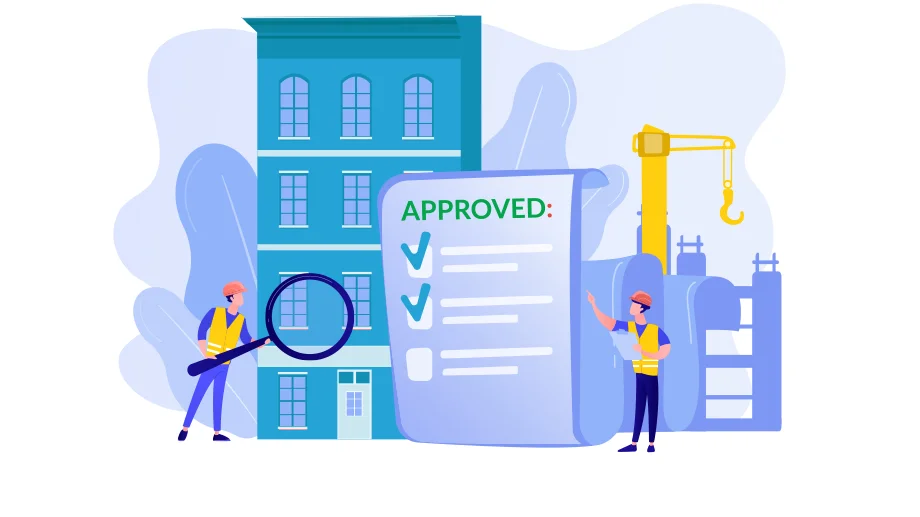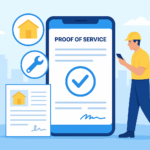Facility inspection has become a lot more complex with the advent of COVID. Customers of facility management companies are asking for more rigorous inspections along with documentation and proof of service. Most facility management companies have some sort of inspection protocol in place but now they need to take it to the next level. How are they going to respond to their customers needs?
You might have heard of “monitoring” of the field service workflow. What does that mean? It really means tracking of everything that goes on in your field operations – tracking location, tracking time, tracking jobs, tracking mileage, tracking safety and tracking exceptions. Comprehensive tracking will make your field service workflow rigorous, measurable, auditable and documented.
Let’s look at each type of monitoring to understand what aspect of your field workflow it tracks and how it is going to help you take your inspections to the next level.
Tracking location, also known as employee tracking is all about knowing where your employees are at any given time. After they have clocked-in, which job sites have they visited, who is closest to the next job site, and so on. This information helps you audit how often inspections are happening and provide proof of visits. Tracking needs to come with strong privacy controls. For example, the app should automatically shut down the tracking when the employees clock out.
Tracking time, aka time clocking, helps you know exactly when an employee clocks in and clocks out from a job site, if they reached a job location at the right time and how much time they spent at the job. The time spent at a job site gives you an indication of how rigorous the inspection process was. Automatic time clocking using Geofencing technology enables field workers to do their jobs without needing to manually punch in their hours or their clock-in/out times. And you can import this information directly into Payroll and HR systems, saving you a lot of manual work.
Mileage is a growing expense since many of the field staff drive their own vehicles and need to be reimbursed for the many miles they drive to visit patients. Businesses are becoming aware that mileage costs are eating into their profit margins. So how do they appropriately reimburse field employees for the mileage so as to not run afoul of labor & tax laws? Mileage tracking is the answer. Employees clock-in to start their day and start recording their miles. Mileage is tracked automatically for the field staff and takes traffic conditions & re-routes as they drive to/from their job sites.
Field Worker Safety is a big issue for companies with remote field workers, especially if they have to work odd hours. While encouraging safety is important, complying with standards such as OSHA rules and regulations is a requirement. Tracking safety is implemented with a custom safety protocol that detects when an employee arrives at a member’s home and initiates an “Are You OK” safety check phone call or text message to check on their status. The field staff need to be able to send alerts to back office operations centers via text,voice or email and tagged with user location, or to the nearest emergency response number (such as PSAP 911). This kind of comprehensive monitoring greatly allays the safety concerns of field employees and provides employers the confidence that they are taking all the steps necessary to keep their employees safe.
How do you handle out of the ordinary situations or exceptions that happen in the field? Is there a protocol you follow? This where exception tracking makes a difference. You need to be able to enforce and tailor business specific conditional logic for all mission-critical data generated in your field workflow. For example, for collecting data from a plant floor, if boiler temperature in the plant is more than 180°F degrees, send an immediate alert to the back-office Operations Center.
When your field employee is at the job site, did they complete the tasks they were assigned? Did they collect all the information that they were supposed to? This is where paperless forms and QR codes come into the picture. We call this job tracking. Customizable mobile forms with conditional logic & validation enable field staff to collect any type of information on their phones. They can take notes, attach pictures, get signatures and scan QR codes to make sure that the job is completed.
What is allGeo’s facility inspection service?
It is a suite of ‘tracking’ tools that has everything a facility management company needs to take their inspections to the next level and get up and running in 24 hours. It includes location tracking, site Geofencing, QR + Inspection forms for indoor job tracking
Many facility management companies are grappling with how they can satisfy their customers who are asking for more of everything – more documentation, proof of service, proof of quality, safety inspections and so on. If you are facing these challenges, are you ready to take your field inspection service to the next level? It is easier than you think.
About allGeo
allGeo helps SMBs and Enterprise businesses better manage mobile workforce and field operations with tools such as real-time location, GPS time and attendance, geofence visit logs, Lone worker safety, Mobile forms and more! All the tools can be highly customized to fit each use case. The platform features powerful rules engine and integrates with popular back-end CRM, HRMS, and Payroll systems to automate day-to-day operations.
allGeo serves customers from a wide range of industry including field service management, trade services, emergency responders, sales reps, transportation & logistics, oil & gas, home health care providers. These customers do report improvement in productivity and savings in payroll.



